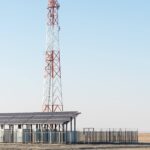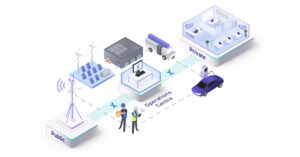In this era of innovation, organizations across industries are modernizing at a rapid rate. New technologies are released on a seemingly daily basis, all promising to improve efficiency, enhance productivity and make operations simpler and easier to manage. The unsung heroes of these advancements, however, are the connectivity foundations that are quite literally powering the vast majority of these new technologies by satisfying the increasingly stringent network requirements for such advanced applications and use cases. Pushing these foundations to their limits almost seems impossible. Unfortunately for certain industry segments, however, innovation continues to be thwarted by outdated or out-of-touch connectivity solutions.
Few verticals understand this challenge as acutely as the electric utility industry. Growing demand for electricity, mandated decarbonization commitments and increasingly common extreme weather events are forcing utilities across the globe to explore new approaches that can address these universal challenges. Yet with service areas that cover thousands of square miles and provide the critical resource of electricity to potentially millions of community members, fostering change is no easy feat. Therefore, implementing a deployable connectivity foundation to affordably and agilely support the two billion devices that will modernize and secure the energy sector over the next couple of years is essential for utility success.
Connectivity is the Key
To advance grid modernization and decarbonization, the modern grid must support the growing proliferation of Distributed Energy Resources (DERs) – alternative energy generation resources like solar panels, wind turbines, electric vehicles (EVs) and battery storage – across their entire service territory. Implementing these new technologies will require Supervisory Control and Data Acquisition (SCADA) elements deployed throughout the service territory. This will only be possible by ensuring utility Field Area Networks (FANs) cover 100% of the customer service area, extending as far as the “last hundred feet” to homes and businesses.
Furthermore, utilities are transitioning from the traditional unidirectional flow of energy – from source to consumer – to a bidirectional flow that supports energy flow from consumer back to the grid. This means that the entire service area must not only be connected, but also that this connectivity can be controlled in real-time. Equipping utilities with this power of control will be key to ensuring the security, visibility and resilience of the modern grid.
Finally, with innovation taking place at a rapid rate, utilities must ensure that the connectivity foundation they choose to power their modernization initiatives can not only meet the pressing demands of today, but prepare them for sustained success going forward. As such, utilities require a flexible and agile connectivity solution that can scale in real-time to support the latest applications and use cases that are driving modernization and decarbonization to ultimately improve customer satisfaction.
A Proven Path to Success
Implementing these necessary changes will not be simple, but with the right connectivity foundation, it is possible. Utility providers need to consider whether their legacy private wireless networks, often based on Land Mobile Radio (LMR) or wireless mesh technologies, can cost effectively meet the QoS and bandwidth requirements of smart grid nodes and connected worker applications throughout their vast service regions. For most utilities looking for a scalable, affordable and future-proof solution, the answer is “No.” And with a market flooded with solution providers eager to win major industry opportunities like these, it can be difficult to navigate through the sea of hype and jargon to determine which connectivity foundation is best fit to power the modern grid.
For example, LMR technologies can cover a wide service area, but fail to meet increasingly mission critical QoS and bandwidth demands for the hundreds of thousands of connected sensors and controls that will be required to extend a bi-directional grid. Similarly, mesh-based solutions – while capable of enabling meter reading for first generation Advanced Metering Infrastructure (AMI) – now fail to deliver the predictable QoS required for increasingly popular “behind the meter” grid integrated assets (e.g. inverters, PV, battery storage). Finally, newer solutions like private 4G/5G networks over CBRS PAL or 900 Mhz spectrum will satisfy the reach, bandwidth and QoS requirements of a smart grid – but high costs and lengthy timelines inhibit the rapid innovation that utilities require to meet short-term decarbonization targets and modernization goals.

Only a converged 4G/5G mobile network can serve the uncompromising connectivity needs of the modern grid. Integrated with tier 1 operators’ infrastructure across the globe, Expeto’s NeXtworking® platform provides a proven solution that leverages the full extent of the carrier’s public network, while providing the real-time control, visibility and management capabilities traditionally associated with a private network. Where service doesn’t reach, utilities can deploy private Radio Access Networks (RANs), yet still control both their public and private mobile networks as a single Enterprise Mobile Network (EMN) that knows no bounds. The result? A future-proof, highly secure, totally controllable and rapidly scalable connectivity foundation that can be deployed in days at 1/10th of the cost of alternative 4G/5G solutions – enabling utilities to redirect savings towards zero carbon DER or other strategic projects.
For more information on how Expeto’s Enterprise First® solution can uniquely power the modern utility, click here.






